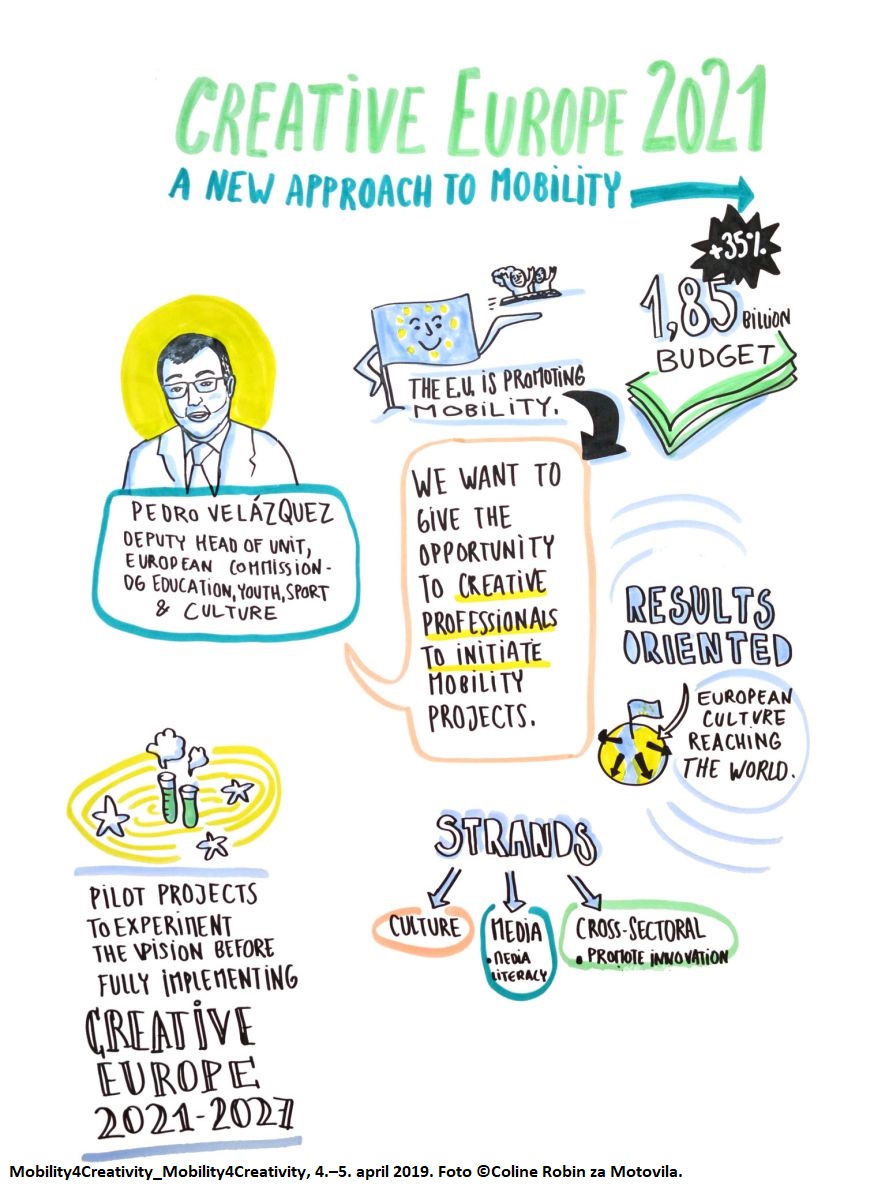Novice
Giving individual artists and cultural professionals the initiative
Pedro Velázquez gave the European Commission’s prospects of culture mobility in Creative Europe 2021 and beyond. The conference titled “Mobility for Creativity” organised by Motovila in Ljubljana on 4–5 April 2019, explored the benefits and challenges of international mobility in the cultural and creative sector, especially putting mobility’s environmental impact to the test.

Pedro Velázquez, Deputy Head of Unit, European Commission – DG Education, Youth, Sport and Culture, told us in his talk “Creative Europe 2021 – A new approach to mobility” that until now, the Creative Europe programme has never launched mobility funding at the level of the artist, always as part of cultural organisations. Now, the EU wants to give opportunities to individuals and professionals to come with their own initiatives and creative plans to support. Creative Europe has funded the i-Portunus project (see Panel on Funding Resources) to test viable schemes; 2020 will continue the experimentation with another call to fund several consortia to keep new schemes going. Mobility must be focused on getting results, on getting concrete outputs. Not just exchanges or skills, but on creative production. Hence, he praised the hashtag for the event – #Mobility4Creativity – as being especially apropos.
Looking at goals for the new Creative Europe programme 2021–2027, the EC aims to increase the competitiveness of the CCS, in particular, the audio-visual sector; and to promote European cooperation on cultural and linguistic diversity and heritage.
The new budget foresees 1.85 billion euro, which reflects a 34% increase, to cover three strands: Cultural, MEDIA and Cross-sectoral. Regarding the new budget, Mr. Velázquez reminded us of two details: 1) the budget will be for 27 member states, not 28; and 2) the Guarantee Facility funds will still exist, but separately, no longer part of the Creative Europe budget.
Other highlights? The Culture Strand can expect a budget of 610 million € to support projects that promote cross-border circulation, increase cultural participation and social inclusion, generate jobs and growth within the CCS, strengthen European identity and values, and contribute to international relations through cultural diplomacy.
The MEDIA Strand’s 1,081 billion € budget foresees projects that will work towards similar goals, but in the AV sector.
The Cross-sectoral Strand’s 160 million € budget will support projects aimed at strengthening a free, diverse and pluralistic media environment, qualitative journalism and media literacy, promoting innovative approaches to content creation, access, distribution and promotion across cultural and creative sectors; as well as promoting the programme’s funding opportunities through the Creative Europe Desks. Overall, says Pedro, we can look for more opportunities for out-of-the-box thinking and innovation across sectors.
Back to FULL REPORT by Jana Renée Wilcoxen for Motovila, Ljubljana 2019.
CC Attribution-NonCommercial 4.0 International (CC BY-NC 4.0).
Further information about the #Mobility4Creativity conference.
The event was organized by the Motovila Institute in cooperation with Arts and Theatre Institute / CED CZ, DutchCulture / CED NL, Centro de Informacão Europa Criativa / CED PT, CED Ireland – MEDIA Office Dublin, Ministry of Culture of the Republic of Croatia / CED HR, Federal Chancellery of Austria, Arts and Culture / CED AT, SCCA–Ljubljana and CMEPIUS.


